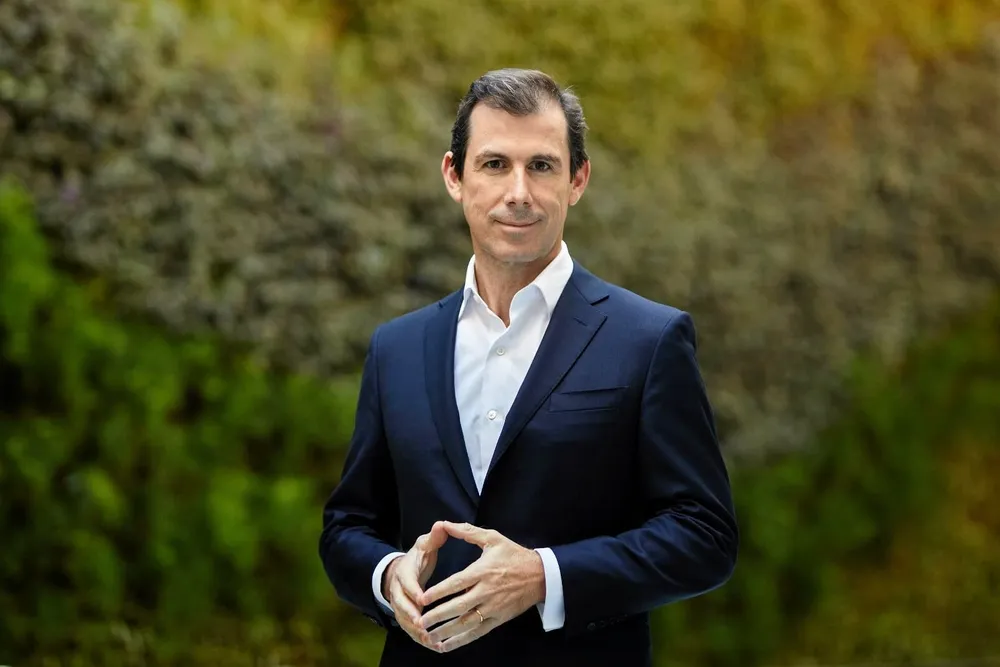Raise caps on grid spend and profits after blackout, says Iberian power giant
Head of Lisbon-headquartered giant sees 'room for improvement' in Spain's regulated market

EDP, largely through its Madrid-based EDPR renewable energy unit, is one of the companies that has driven the massive expansion of solar and wind power in Spain and Portugal, as well as other key markets such as the US.
EDP’s quarterly results highlighted a 20% boost in the operating revenues generated by wind and solar in the first quarter, on a yearly comparison, helped by new capacity added in the final quarter of 2024.
From the perspective of its own portfolio management, EDP stressed that the flexible aspects of its portfolio are becoming more important as solar penetration climbs higher, “fostering intra-day price volatility and increasing the need for backup services”.
“Higher electrification, grid management complexity and intermittent resources, increase the demand for balancing services that can be provided by flexible generation assets," the company stated.
EDP's chief executive Miguel Stilwell d’Andrade said last week's blackout also highlighted the need for more investments in electricity networks in Portugal and Spain, and urged both to give it their attention as they prepare to renew regulatory terms.
As part of this regulatory process, EDP has to renew its own long-term investment plans in both countries.
In Portugal’s case, EDP is proposing grid investments of €1.5bn ($1.7bn) for 2026-30, up 50% from the previous five-year period.
The plan, which designates 45% of this capex for grid modernisation and 20% for electrification and decarbonisation, received a swift assent by Portugal’s electricity market regulator and will be submitted for government approval later this year.
Referring to the topic that has "grown in importance" following the blackouts, Stilwell d’Andrade said the company had also proposed that 20% of the investment budget be allocated to making networks more reliable and ensuring “a continuous robust service as the renewal penetration in the grid grows”.
He said he saw the swift regulatory consent, without proposed cuts, was a sign of general consensus in the sector that there is a need for additional investments in the networks.
Adequate returns
“I think it's also consensual... that we need to ensure adequate returns for the electricity networks to support these higher investments and to enhance the assets modernisation,” he added.
In this sense, EDP is expecting to get a proposal from the regulator on 15 October in relation and a final decision on terms for the next regulatory period on 15 December.
“I think we'll be hopefully having public hearings and discussions over the next couple of months. But at least on the investment side, we already have a positive regulatory opinion on this, subject to government approval.
“Now we have to have that discussion around the returns of this additional investment.”
'Room for improvement'
EDP is also discussing a 2026-28 investment plan with Spanish regulators, including an option to “significantly increase” investment.
New investment limits are due to be approved by Spanish regulators in the final quarter and Stilwell d’Andrade appealed for more flexibility to help meet the challenges.
“We think that the investment conditions in Spain have room for improvement," he said.
"The return on (regulated asset base) is currently 5.6% and there's no inflation update. On top of that, there's an investment cap of 0.13% of GDP,” he said.
"We've seen that the Spanish government…recognises that this needs to be changed. We believe that the regulator agrees that this is urgent and that the current rate should be increased."
"It's not just about the returns. We have to see the whole regulatory framework before taking a decision on whether we increase investment or not. But what I'd say is we would certainly hope and expect, and think it's desirablefor the system as a whole that you have higher than the 6.5%."
EDP’s plan was submitted to Spanish regulators on 30 April after a favourable opinion from the regional governments, but is within the current investment caps.
Stilwell d’Andrade said he expected regulators to increase overall investment limits before the end of the year.
“We've also proposed another plan with a significant increase for the 2026-28 period.... So, if there's an increase in the cap, we already have an alternative plan already prepared.”
EDP has invested heavily in Spanish networks, especially in northern regions such as Asturias and Cantabria.
“The key message is that improvement of returns is critical to attract private investment in the networks and critical to support the energy transition. So, we'll see how this evolves in the next couple of quarters," Stilwell d'Andrade said.
“We expect to see the improvement in regulatory conditions improvement that is required to support capex needed for the energy transition."
EDP expects to add another 2GW in wind and solar capacity in 2025 and 70% of this to be commissioned in the final quarter.
Half of this new capacity is in the US, where import tariffs have brought a new element of uncertainty.
But the company said its exposure to tariffs is limited due to a supply chain strategy, introduced in 2022, that focused on local content, thus mitigating impacts from import duties and tariffs.
(Copyright)